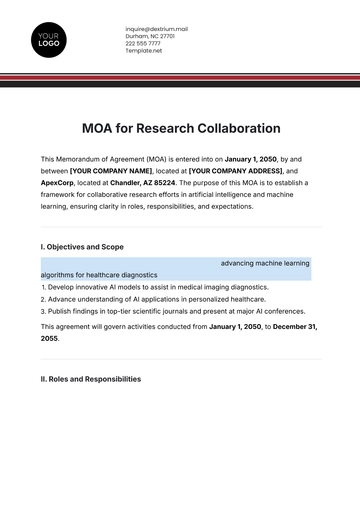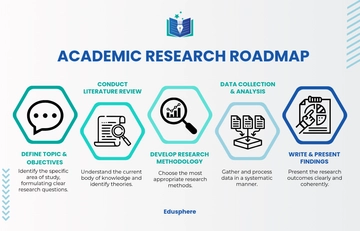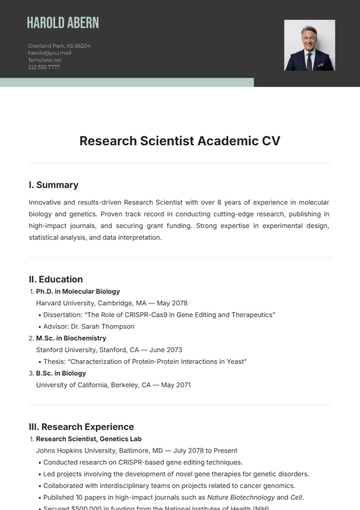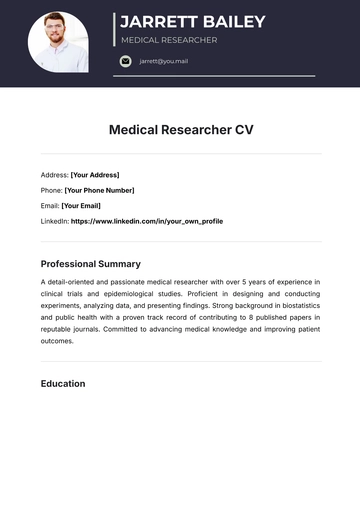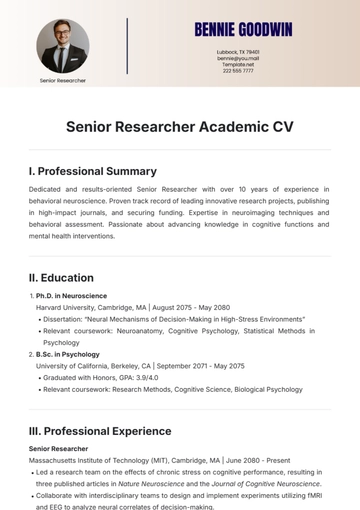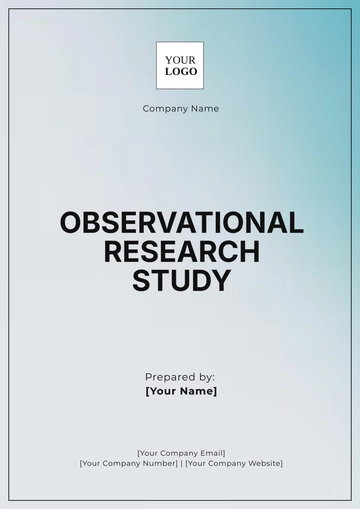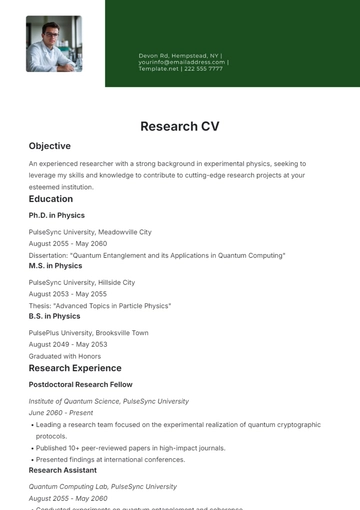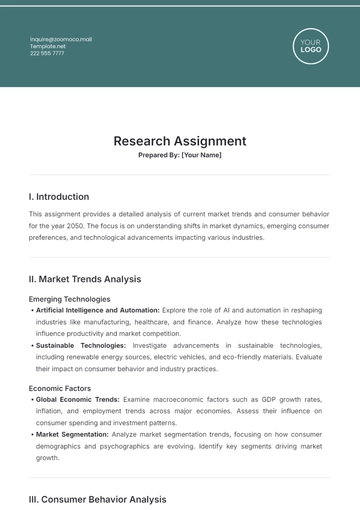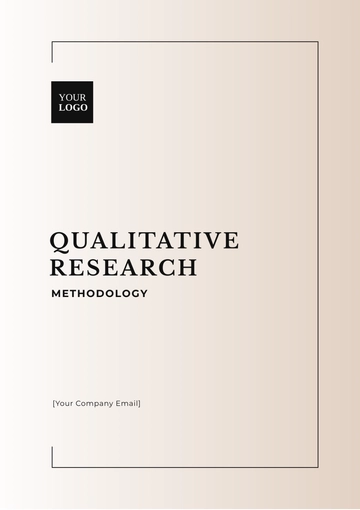Behavior-driven Performance Research
Introduction
Purpose
The purpose of this Behavior-Driven Performance Research Template is to offer a systematic framework for evaluating the performance of various facets of [Your Company Name]'s operations and services. In an increasingly competitive market, understanding how users interact with our products and services is not just beneficial—it's essential. This research aims to delve into the behavioral aspects that influence performance metrics, thereby providing a nuanced understanding that goes beyond mere numbers.
Scope
This document is exhaustive in its coverage, encompassing the research objectives, methodology, performance metrics, findings, conclusions, and recommendations. It will serve as a blueprint for conducting behavior-driven performance research, outlining the steps and considerations necessary for a comprehensive analysis. The scope is not limited to any single department or function within [Your Company Name] but is intended to be applicable across various domains, from product development to customer service.
Audience
This document is designed to be a resource for a broad range of stakeholders within [Your Company Name]. The primary audience includes:
Management Teams: For strategic decision-making and resource allocation.
Research and Development Teams: To understand how user behavior impacts product performance.
Quality Assurance Teams: For identifying areas of improvement in product quality and user experience.
Investors and Stakeholders: To provide a data-driven basis for evaluating the company's performance and potential.
Research Objectives
Primary Objectives
Secondary Objectives
Methodology
Data Collection
The success of any research hinges on the quality of data collected. For this research, we will employ a multi-pronged approach:
User Surveys: Customized surveys will be sent to a segment of our user base to gather qualitative data.
Analytics Tools: We will use advanced analytics tools to collect quantitative data. This includes tracking user interactions, time spent on different features, and conversion rates.
Direct Observations: In some cases, direct observation of user interactions may be necessary. This could involve usability testing sessions or A/B tests.
Data Analysis
Once the data is collected, the next step is its analysis. We will employ a range of techniques for this purpose:
Statistical Methods: Basic statistical methods like mean, median, and standard deviation will be used for initial data sorting.
Machine Learning Algorithms: For more complex behavioral patterns, machine learning algorithms may be employed to identify trends and make predictions.
Performance Metrics
Key Performance Indicators
The Key Performance Indicators (KPIs) serve as the measurable outcomes that we aim to influence through this research. The following table outlines the KPIs that will be focused on:
KPI | Description | Target |
User Engagement | Time spent on the platform | > 30 mins |
Conversion Rate | Percentage of users who complete a desired action | > 5% |
Benchmarking
Benchmarking is a crucial aspect of this research. We will compare our performance metrics against those of our competitors and against industry standards. This will provide a more contextual understanding of where [Your Company Name] stands.
Findings
Charts and Graphs
User Engagement Over Time
To visualize the user engagement over time, a line chart is provided below. This chart will help us understand if the new features have had a positive, negative, or neutral impact on user engagement.

Conversion Rate Comparison
To compare the conversion rates, a bar chart is used. This will help us understand which features are most effective in converting users to take desired actions.
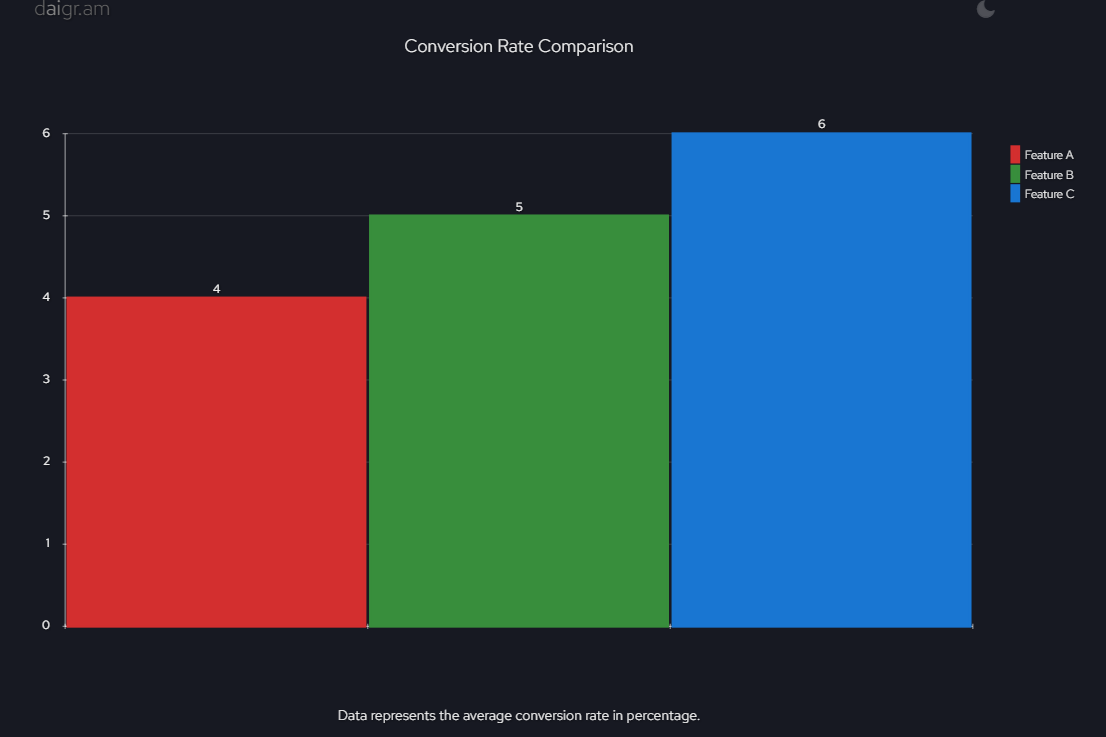
Conclusions
After rigorous research and analysis, we have arrived at several key conclusions. Firstly, [Your Company Name]'s new features have generally been well-received, indicating that our development efforts are aligned with user needs and preferences. However, there are areas where performance could be improved, particularly in terms of user engagement and conversion rates.
Recommendations
Based on the findings and conclusions, we recommend the following:
Enhance User Engagement: Introduce more interactive elements and possibly gamification features to keep users engaged.
Optimize Conversion Funnel: Streamline the user journey to make it easier for users to complete desired actions, thereby improving conversion rates.
Appendices
Contact Information
For further information or clarification, please refer to the contact details below:
Company Name: [Your Company Name]
Email: [Your Company Email]
Address: [Your Company Address]
Phone Number: [Your Company Number]
Website: [Your Company Website]
Social Media: [Your Company social media]
Thank you for your time and consideration.
[Your Company Logo]
This document aims to be a comprehensive guide for behavior-driven performance research at [Your Company Name]. It is designed to be a living document, updated periodically to reflect new findings and shifts in company strategy or market conditions.
HR Templates @ Templates.net












